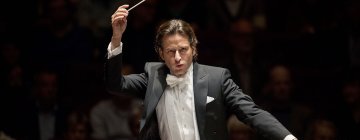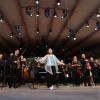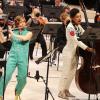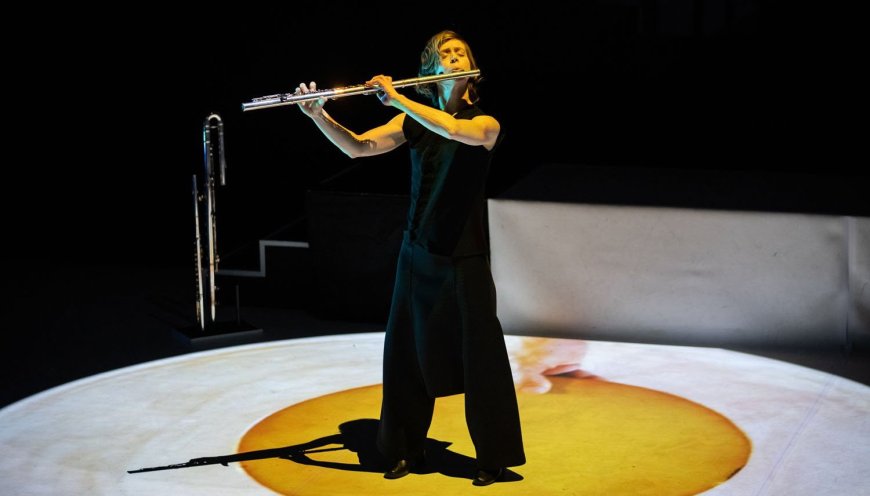
Claire Chase had a childhood dream of becoming a major-league ballplayer before discovering the flute. Professional baseball’s loss has been classical music’s gain.
Chase, now 47, has led an astonishing career in the contemporary classical scene, having given the world premieres of hundreds of works. Many of those originate from Density 2036, her ongoing 24-year-long commissioning project that aims to reimagine the solo-flute literature in performances, recordings, educational offerings, and an accessible online archive.
All that will be on view at the 79th Ojai Music Festival when Chase, this year’s music director, welcomes — and collaborates with — an all-star ensemble of composers and musicians. Four days of concerts are planned, June 5–8. While the flutist previously performed at Ojai in 2015, 2016, and 2017, this is her first time at the helm as curator.
But the firsts in Chase’s career are many. In 2012, she became the first flutist to be awarded a MacArthur Fellowship, and five years later, she was the first flutist to snag the Avery Fisher Prize.
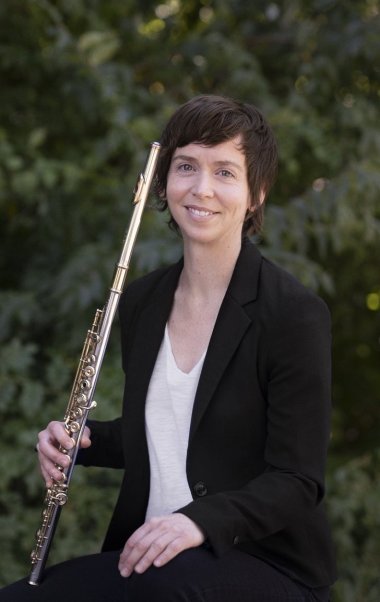
Chase grew up in Leucadia, California, in a family of musicians where “even the dog sang,” as she told SF Classical Voice. She went on to study at Oberlin Conservatory, after which, in 2001, she co-founded the International Contemporary Ensemble, a collective of musicians and artists committed to equity and social responsiveness in their collaborations. Serving as the ensemble’s artistic director until 2017, Chase helped shepherd the premieres of more than 1,000 new works.
In demand as a soloist, the Brooklyn-based Chase has appeared with orchestras including the New York Philharmonic, the Los Angeles Philharmonic, and the San Francisco Symphony, where she was a collaborative partner alongside Music Director Esa-Pekka Salonen. Also a deeply committed educator, Chase is a professor of practice in the music department at Harvard University.
SFCV caught up with the fiendishly busy Chase by phone, discussing everything from Ojai and her thoughts on collaboration to Density 2036 and how having a daughter has changed her. This conversation has been edited for concision and clarity.
Why is the Ojai Music Festival so special to you?
It’s one of the most beautiful places in the world. The light there is magical. The landscape, the environment, the flora, the fauna — all of that is music to me. My approach for curating has been to embrace the totality of Ojai — its environs, its surroundings — and incorporate that into the program, not symbolically but literally. There are several concerts outdoors in direct communication with the multispecies environment that surrounds us — crows, night birds, so many creatures have so much to say around Libbey Bowl.
Another thing that separates it from other festivals is that there’s a dedicated core of the audience that goes to just about everything. In curating [at Ojai], one of the challenges and goals is to program with that hardcore contingent in mind. I don’t know of [another] festival anywhere in the world where listeners are as open-eared and voracious. Everyone seems game, and it’s a lot to take in, [but] it’s been so much fun dreaming up possibilities.
This year’s festival is marking several musical milestones, including the birthdays of a few composers: Annea Lockwood’s 86th, Tania León’s 82nd, and Terry Riley’s 90th. What were some of your criteria in programming?
What was important to me from the beginning was featuring three generations of composers — almost four if you consider [the late] Sofia [Gubaidulina] and Pauline [Oliveros], who are with us in spirit.
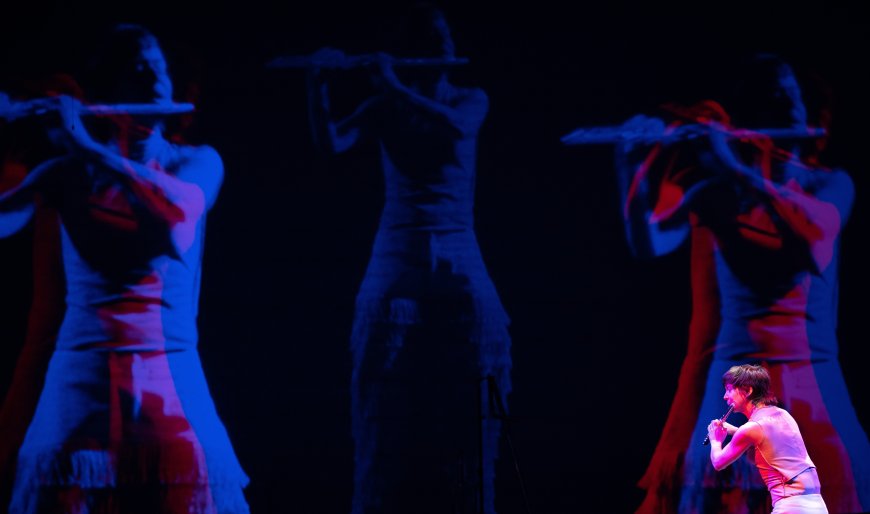
Annea, Tania, and Terry are very much with us. Then [there’s] this group of folks at the height of their creative powers: Liza Lim, Anna Thorvaldsdottir, Marcos Balter. [And finally] there’s this trio of young ’uns: Eduardo Aguilar, Vicente Atria, and Bahar Royaee. It was important to me to have three emerging voices featured as part of the festival. It was one of the first structural decisions. Once we decided [on the lineup], it was a fun game trying to figure out which of their incredible pieces we would program.
Can you talk about Terry Riley’s The Holy Liftoff, which began as an open-score sketchbook and evolved into a multidimensional work that will be featured at Ojai in a realization by composer Samuel Clay Birmaher?
Holy Liftoff is an ongoing project we’ve been working on for the last three years, and we’ll be doing excerpts of it. I was on tour with Terry in Japan, [and] an unexpected gift came when he texted this gorgeous graphic of [part of the] score. Just an hour ago, I picked up a large-scale silkscreen print [of it] for the audience [at Ojai] to see. [The score is] a beautiful piece of art, as well as music, and a generous jumping-off point for musicians.
And what about the world premiere of Riley’s Pulsefield 3?
Terry had asked, “What do you think? Do you have a group of people to perform this?” [I said] “Do I have a group of people?” I called and sent them the score, and we got ourselves a Terry Riley world premiere! It will be the grand finale [at Ojai], with everybody onstage. This came not as a commission but as a gift, out of the love and trust he has for many of the musicians.
One of the West Coast premieres on the schedule is Susie Ibarra’s Sky Islands, which just won the 2025 Pulitzer Prize for Music and is inspired by the rainforest habitats of Luzon, Philippines. You’ve performed the work before, along with Ibarra and a host of collaborators.
Susie is an extraordinary researcher, as well as a sound artist and composer. She shines a light [and] microphone on this wildly varied and also endangered ecosystem. There is so much music to be found in a place like that. We bring in plant life and the sounds of plant life — and it’s not just metaphorical.
There will be live plants onstage attached to tiny mics. It’s rich pitch material and rhythmic material. The plants are sourced in Ojai. The sounds are percussive, and some of the pitches are quite specific. You never know what you’re going to get, [but] it’s a lot of fun to play with. The piece traverses all kinds of different moods — from somber and melancholy to searching, euphoric, celebratory — and ends with a ritualistic processional, and we will invite the audience to join us as we exit.
In 2013, you launched Density 2036, a monumental initiative where you commission new works for the flute each year, all leading up to the centennial of Edgard Varèse’s seminal solo piece, Density 21.5. What was the impetus for the project, and how’s it going?
The impetus was to respond to a question — I was about to say answer, but that’s presumptuous. Density 21.5 changed the conception of the flute and its music and performers for the 20th century. “What would that be in the 21st century? Relatedly, how could I, as a performer and advocate, play a part in expanding the repertory?”
In 2013, when I released my recording of [Varèse’s] Density, it felt like the stakes were really high. Although it was only 4½ minutes of music, it opened the space for me to say, “What next? What will [the equivalent of this] piece be for my time and for generations to come?” I decided to put my money where my mouth was.
[Density 21.5] will be 100 in 2036, and to be honest, I’m afraid it’s not enough time [to commission as many works as I would like to before then]. I wish I had another 10 years. We’re in the middle now, and I’m quite sure that I will have too many ideas to fit into the next 12 years.
I’m scheming to extend the project, and one of the most meaningful [things] for me is that it’s already been extended with the initiation of the [Density] Fellows program [begun in 2023] — to hear up-and-coming generations take these pieces into their hands and hearts and make them their own.
Liza Lim’s Sex Magic for solo contrabass flute and electronics is from Density 2036 and will also have its West Coast premiere at Ojai.
It’s a piece Liza says is about the sacred erotic in women’s history. I’ll be playing the contrabass flute, which is 5½ feet tall, and there are nine movements. The piece is also a ritual, something we’ll hear in many different programs [this year at Ojai], and this [performance] is designed as a ritual space. There are three altars, and the flute sits on top of one, very close to the audience. [There] are also bells, shells, tiny drums, and sacred objects, [plus] a lighting designer [Nicholas Houfek] and electronics performer, Levy Lorenzo.
The flute is attached to a transducer microphone that activates the percussion setup. [When] I click my left pinky, a gong behind me is activated. A large bass drum hangs over my head, and by moving the flute, I’m a full one-woman band. There’s also an alto ocarina and an Aztec death whistle. I play it once, and it’s a terrifying moment.
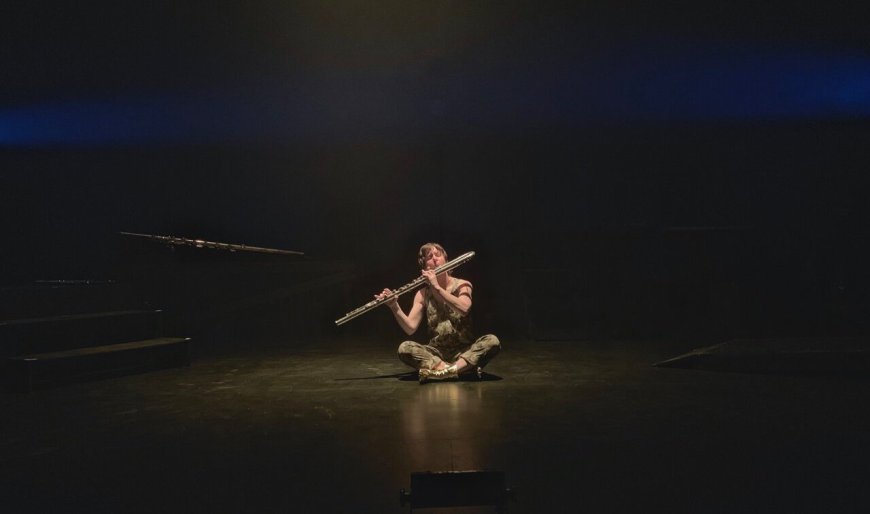
Terrifying, perhaps, but still very cool. Finally, I’m wondering if the experience of having a daughter has changed you in any way?
It’s the greatest thing that ever happened to me. A very dear friend who’s a father told me, “When you have a child, everything else is like miniature golf.” [This was] Richard Beaudoin, a composer of one of the Density works. He’s a model for me in music and life. He was absolutely right. There’s nothing more important than attending to the magical world of my daughter. Any premieres, concerts — anything important before — is now miniature golf by comparison. It’s a great relief. It’s humbling every day and totally thrilling. She’s almost 3 years old and will be with us at Ojai.
